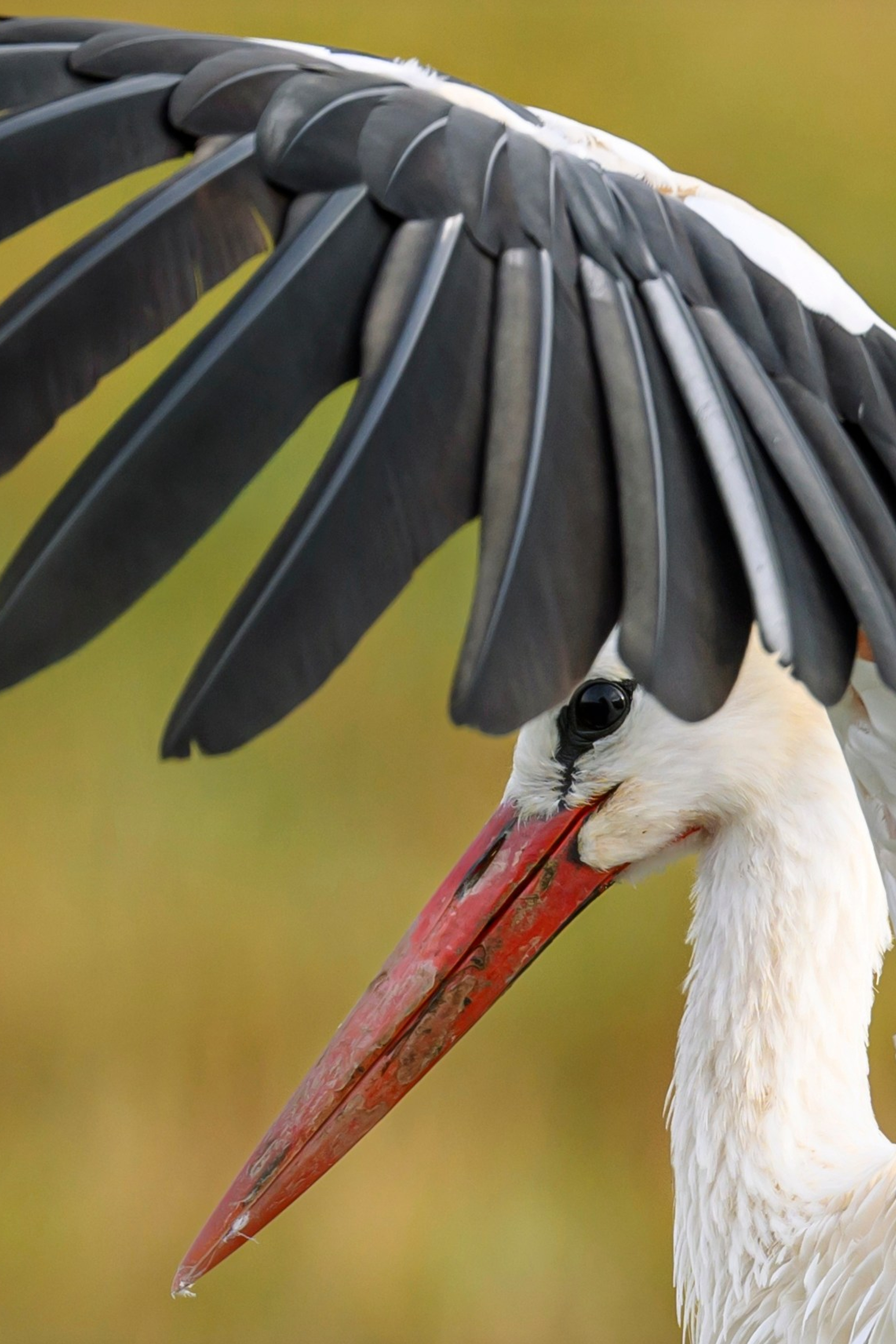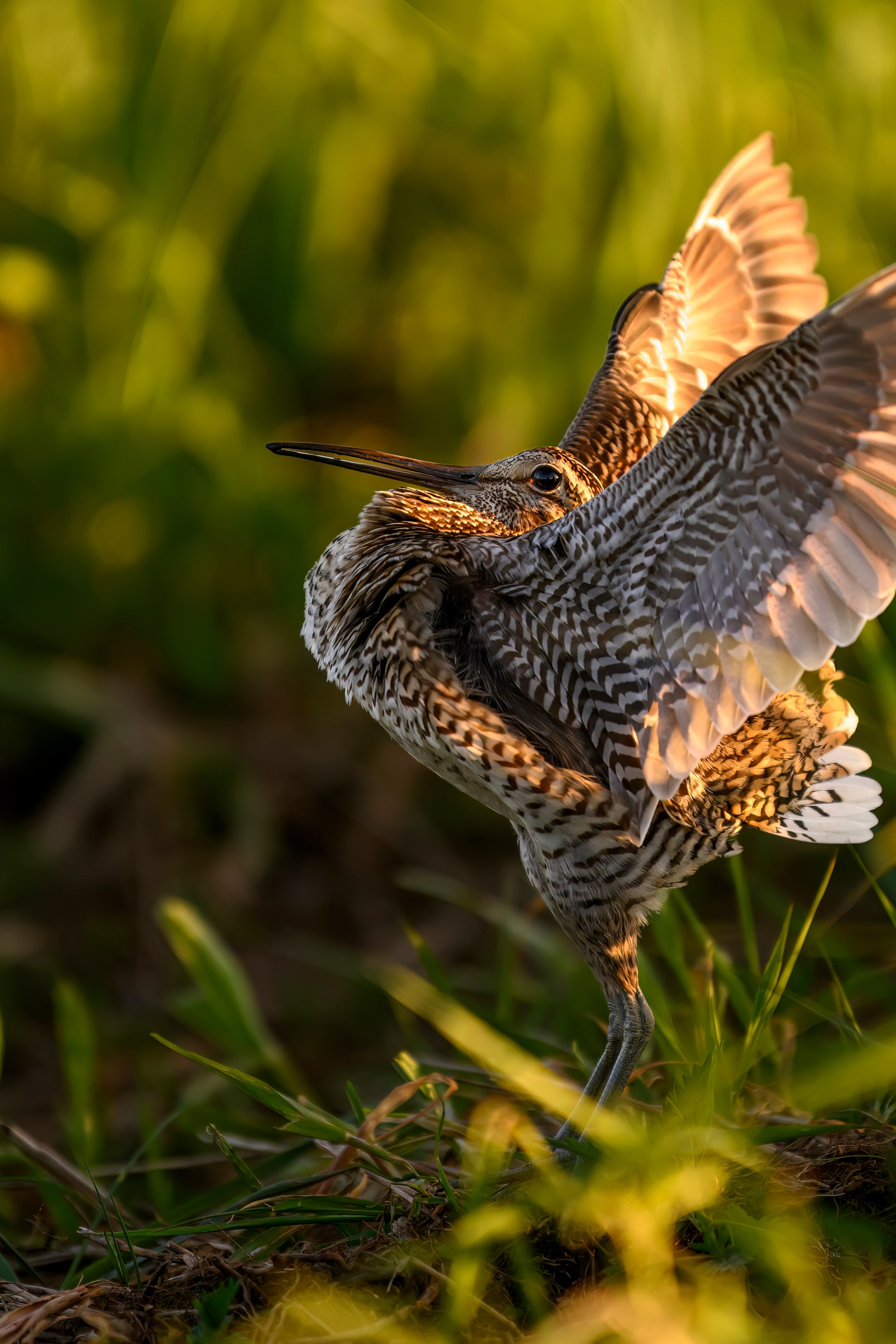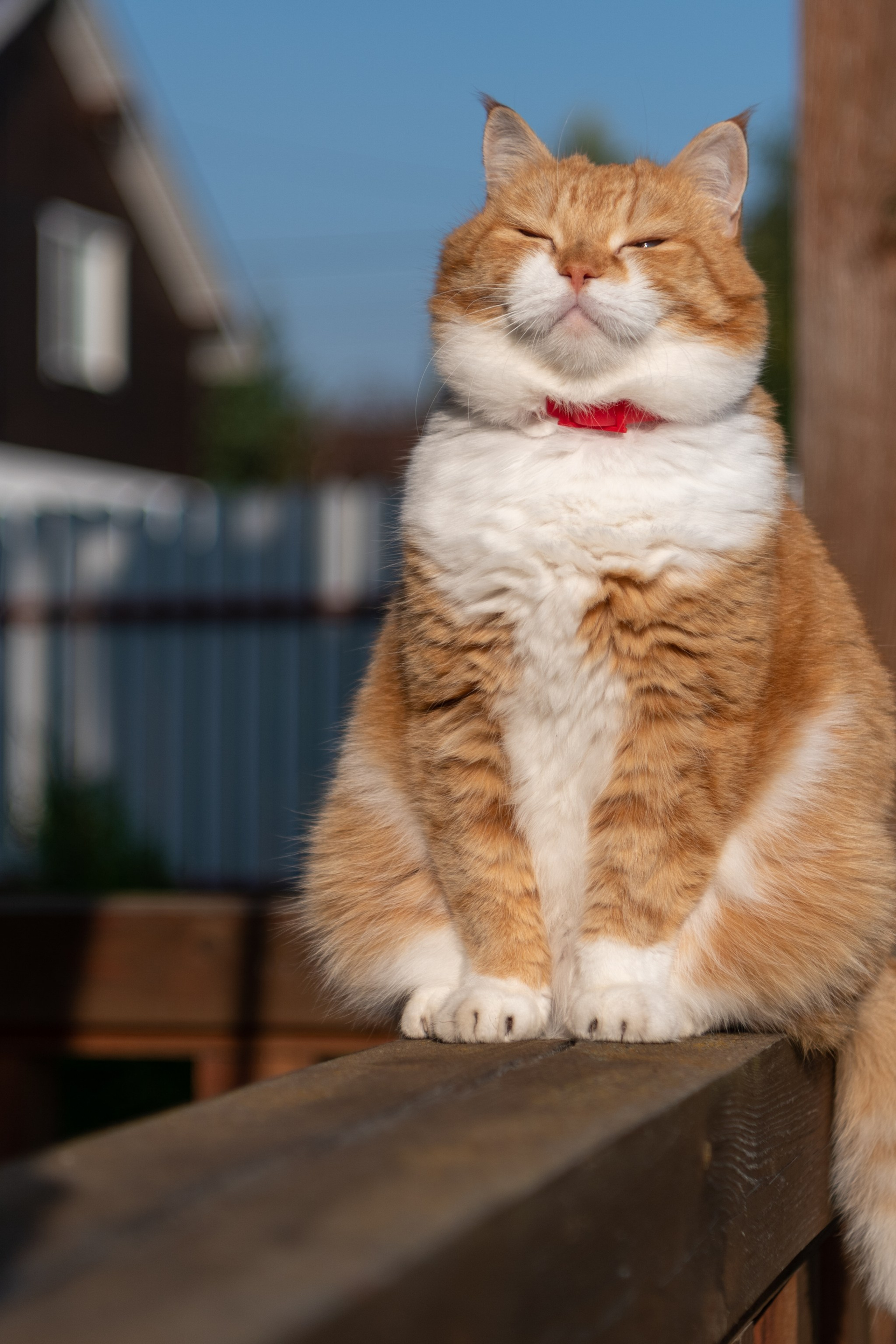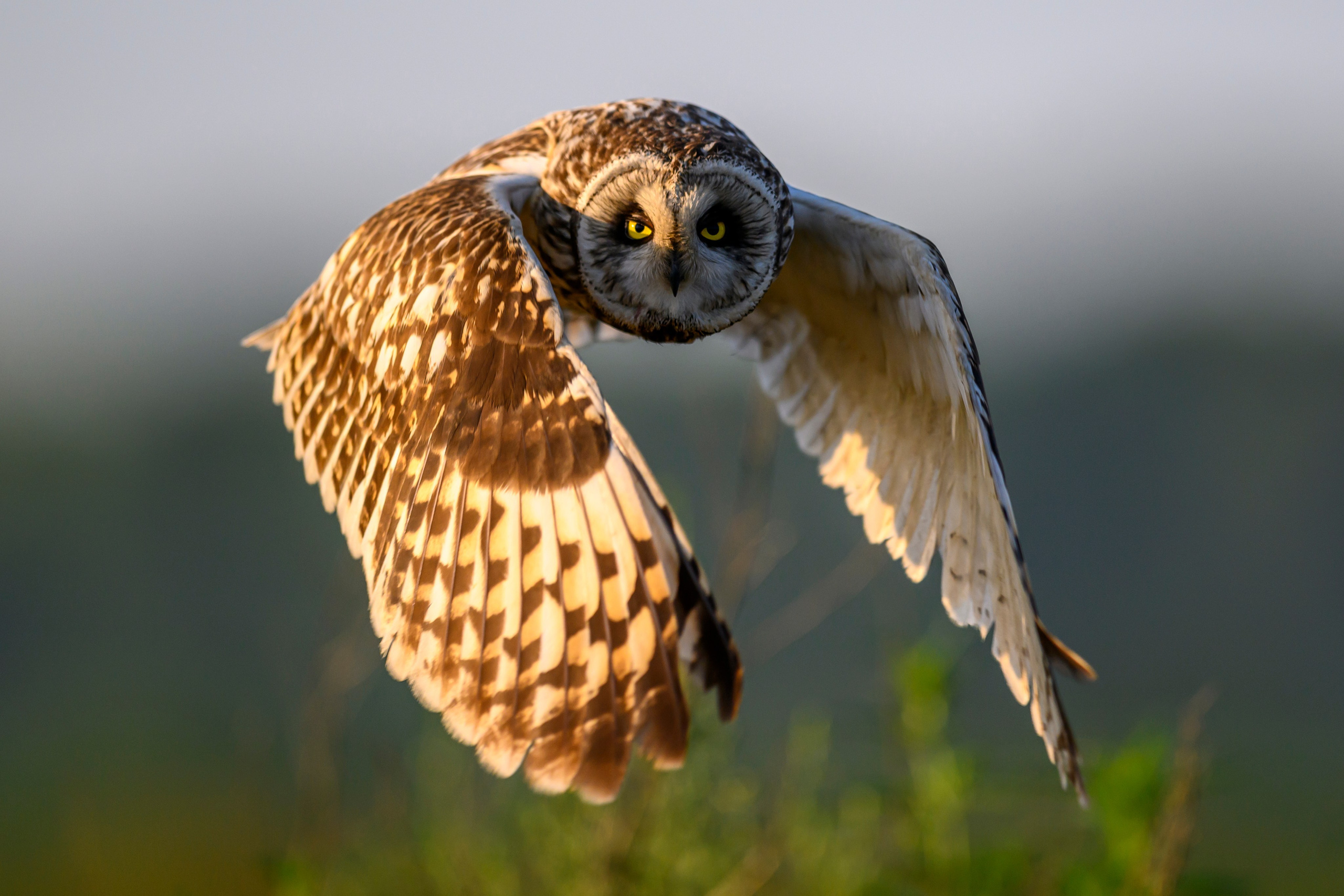
Почему именно болотная сова?
В отличие от многих других видов сов, болотная сова активна днём и в сумерках, что даёт прекрасную возможность снимать её в естественном свете и наблюдать интересные моменты охоты.
Предпочитая болота, луга и поля, сова часто охотится на относительно ровной местности, что упрощает съёмку и делает сам процесс захватывающим: легко отследить полёт, найти гнёзда или места отдыха.
Болотные совы контролируют численность мелких грызунов и тем самым влияют на состояние сельскохозяйственных земель и естественных угодий. Наблюдение за их охотой и поведением помогает лучше понять тонкий баланс природы.
При всей видимой «доступности» этих птиц, съёмка болотных сов требует терпения и знания их повадок. Для меня это способ совершенствовать навыки природной съемки и делиться полученным опытом с другими.
В итоге фотопроект призван не только создать зрелищные и информативные кадры, но и привлечь внимание к проблемам сохранения болотных сов и их мест обитания. Надеюсь, что результат вдохновит других исследовать природу и бережно относиться к ней.
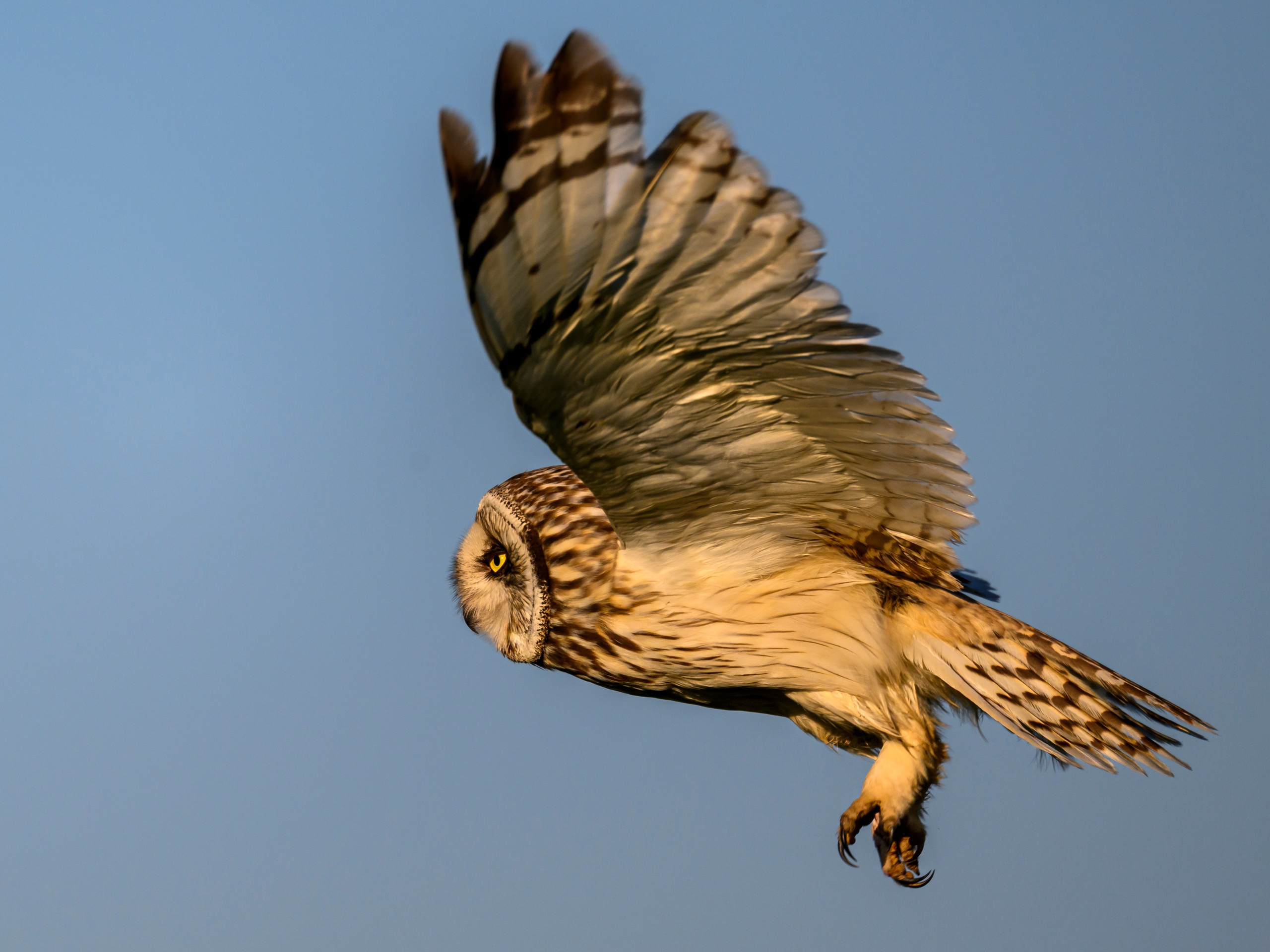
Distinctive Features: Ears, Eyes, and Characteristic Coloration
One of the most striking features of the short-eared owl is its expressive yellow eyes, surrounded by dark “rims,” creating a mask-like effect. These eyes enable the owl to orient itself perfectly in twilight and low-light conditions while allowing it to focus instantly on potential prey.
Another unique detail is the bird’s “ears"—small tufts of feathers, which, unlike some other owl species, are barely noticeable in everyday life. These tufts do not serve a protective or auditory function, but they likely play a role in display behavior, aiding in communication and camouflage.
The short-eared owl has dense plumage, especially on its chest and back, which not only keeps it warm during colder periods but also helps it blend seamlessly into its surroundings. This natural camouflage allows the owl to effectively hide from predators such as foxes, eagles, harriers, and large birds, while also enabling it to approach its prey undetected.

Habitat and Range
The short-eared owl prefers open areas with tall grass, such as wetlands, steppes, meadows, and agricultural lands. It can be found on all continents except Antarctica and Australia. In Europe and Asia, short-eared owls are primarily found in northern and central regions, favoring large marshy areas, forest-steppe zones, and coastal meadows. In North America, they inhabit similar environments, including prairies and wetlands.
These birds are nomadic, meaning they can migrate over long distances in search of food and suitable nesting conditions. During the colder months, especially in northern regions, short-eared owls may migrate south in search of milder climates and more abundant prey.
Thus, the short-eared owl is well-adapted to open and marshy spaces, where its unique appearance, camouflage skills, and wide wingspan make it an effective hunter.
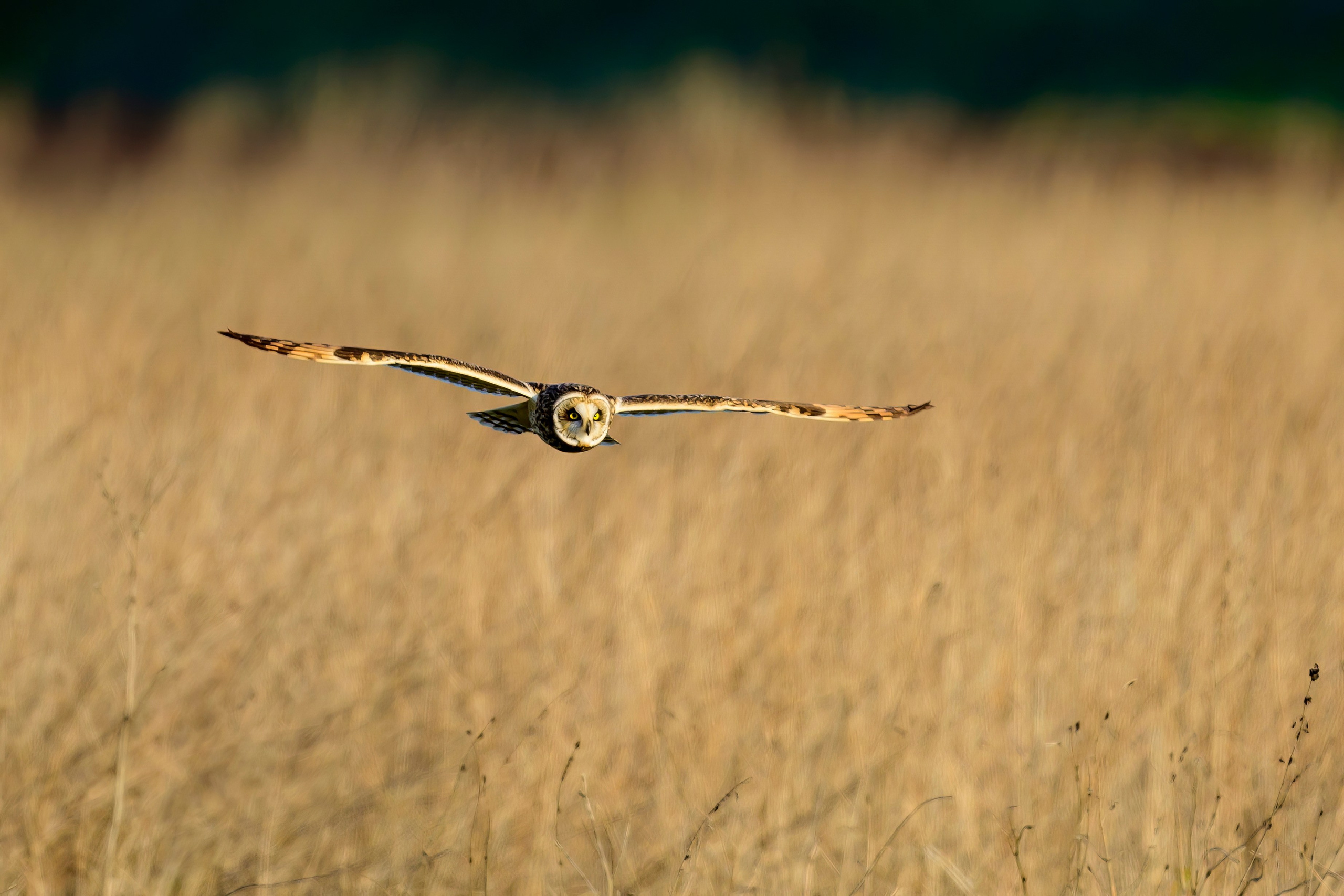
Behavior and Lifestyle
The short-eared owl stands out from most of its relatives due to its predominantly diurnal lifestyle, which makes it unique among owls. This trait, along with its behavioral patterns and migratory habits, creates a complex picture of the daily existence of this mysterious bird.
Diurnal Lifestyle
Unlike most other owl species, which hunt and are active at night, the short-eared owl leads a primarily diurnal or crepuscular life. It is usually most active during the early morning or late evening hours, though it can also be seen hunting in the middle of the day. This daytime activity is closely tied to its primary prey—small mammals, particularly voles, which are also active during daylight hours.
This behavior makes the short-eared owl especially fascinating for birdwatchers and photographers, as it is easier to spot and observe during the day. The owl often flies low over the ground, slowly gliding over fields, wetlands, or meadows in search of prey, sometimes hovering in place to listen for the movements of its potential victims.
Migration and Territoriality
Short-eared owls are nomadic birds, and their behavior largely depends on the availability of food. During the breeding season, which usually occurs in the spring and early summer, they seek out suitable areas with tall grass or wetlands for nesting. However, in winter, many populations, especially those living in northern regions, migrate south in search of milder climates and sufficient food.
The migrations of short-eared owls can be quite unpredictable. Sometimes they remain in one place if food is abundant, but they may also travel long distances if environmental conditions worsen. For example, in years with low rodent populations, which are their primary food source, short-eared owls can move hundreds of kilometers in search of new hunting grounds. Their migratory routes may pass through various ecosystems, from wetlands and meadows to agricultural fields.
Territorial behavior in short-eared owls is most evident during the breeding season, when males actively defend their nesting areas. Males display their presence through aerial maneuvers and loud calls, deterring rivals and potential predators. However, outside of the breeding season, these birds become more social and may form temporary flocks in wintering areas or places with abundant food.
Communication with Other Individuals
Short-eared owls communicate using a variety of sounds and visual signals. During the breeding season, males display specific behaviors, including aerial “dances” accompanied by calls and wing claps. These maneuvers serve to attract females and demonstrate strength to other males.
The main sound produced by the short-eared owl is a low, repetitive “hoo-hoo-hoo,” similar to typical owl hooting but softer and more muffled. These calls can be heard over a considerable distance, especially in the early morning or evening when the owl is most active. In addition to hooting, owls may emit sharp sounds when threatened or during confrontations with rivals.
Besides vocal communication, short-eared owls also use visual signals. During the breeding season or when defending territory, they may display their striking plumage and aggressively spread their wings, making themselves appear larger to scare off potential threats.
While hunting and moving around, short-eared owls are very quiet. Their flight is nearly silent due to the unique structure of their feathers, allowing them to approach prey unnoticed. This also helps reduce attention from other predators or competitors.
Thus, the behavior of the short-eared owl is a complex and multifaceted system of interaction with both the environment and other individuals. Their diurnal activity, nomadic existence, and unique methods of communication allow these birds to thrive in a variety of conditions despite numerous ecological challenges.
Hunting and Diet
Hunting and diet are crucial aspects of the short-eared owl’s life, ensuring its survival and ability to reproduce. As a highly efficient predator, the short-eared owl has unique hunting strategies and specialized sensory organs, making it one of the most successful hunters in its ecosystem.
Primary Diet: Small Mammals, Birds, and Insects
The short-eared owl primarily feeds on small mammals, with a strong preference for voles, which make up 80-90% of its diet. Voles are small rodents that inhabit tall grass and meadows, where the owl hunts. These rodents provide a stable and nutritious food source, particularly during their breeding season when their population significantly increases.
In addition to voles, short-eared owls hunt other small mammals such as mice, shrews, and rats, especially during their migration periods, when the owls may need to change habitats. Depending on food availability, they may also catch small birds, including sparrows and larks, and occasionally young ducks. However, birds make up a smaller part of the owl’s diet compared to mammals.
Insects such as large beetles, grasshoppers, and moths can supplement the short-eared owl’s diet, especially during the summer when their numbers peak. Although insects are a less significant part of the owl’s diet, they can play an important role when the primary food source is scarce.
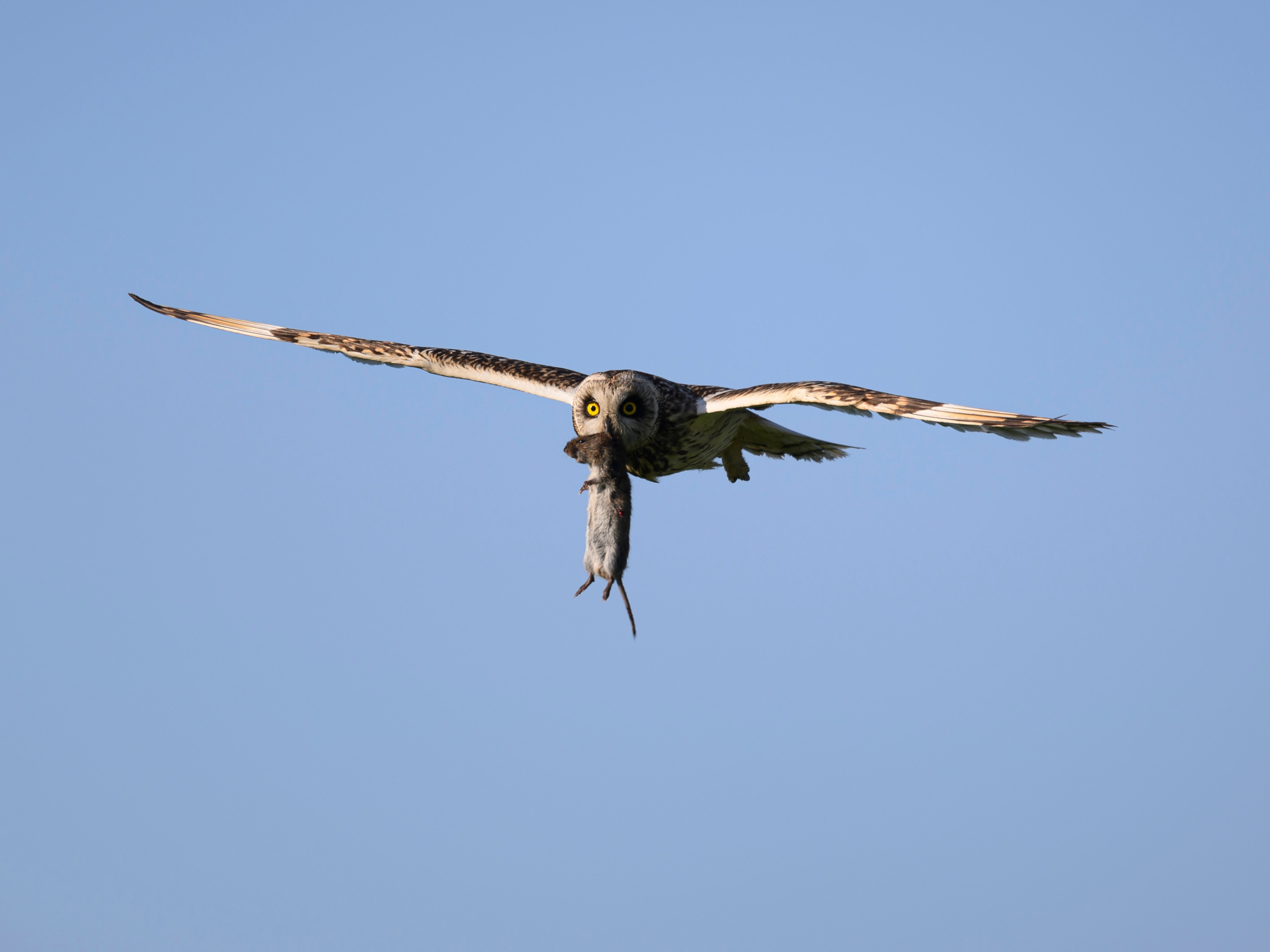
Hunting Methods: Slow Flight and Sudden Attack
Hunting by the short-eared owl is a captivating sight, with its strategies well-suited for open spaces such as wetlands and meadows. One of its characteristic hunting methods involves slow, almost silent flight just above the ground. The owl glides at a low altitude (usually between 1 and 3 meters) over the grass, carefully scanning for movement. Its broad wings and specially adapted feathers allow it to glide through the air silently, without alerting potential prey.
This method of hunting enables the owl to cover large areas in search of food. When it spots a potential target, the owl may hover in place, much like birds of prey such as falcons, assessing the situation while listening for the rustling of rodents beneath the grass. Once ready to strike, the owl swoops down swiftly, using its sharp talons to grab the prey.
Often, the short-eared owl attacks its prey suddenly, with minimal sound or visual warning. It can snatch a vole or other small mammal hidden in the tall grass or shrubs where these animals seek food and build nests. When hunting small birds, the owl typically strikes mid-flight, surprising a flock or catching them at their roosting sites.
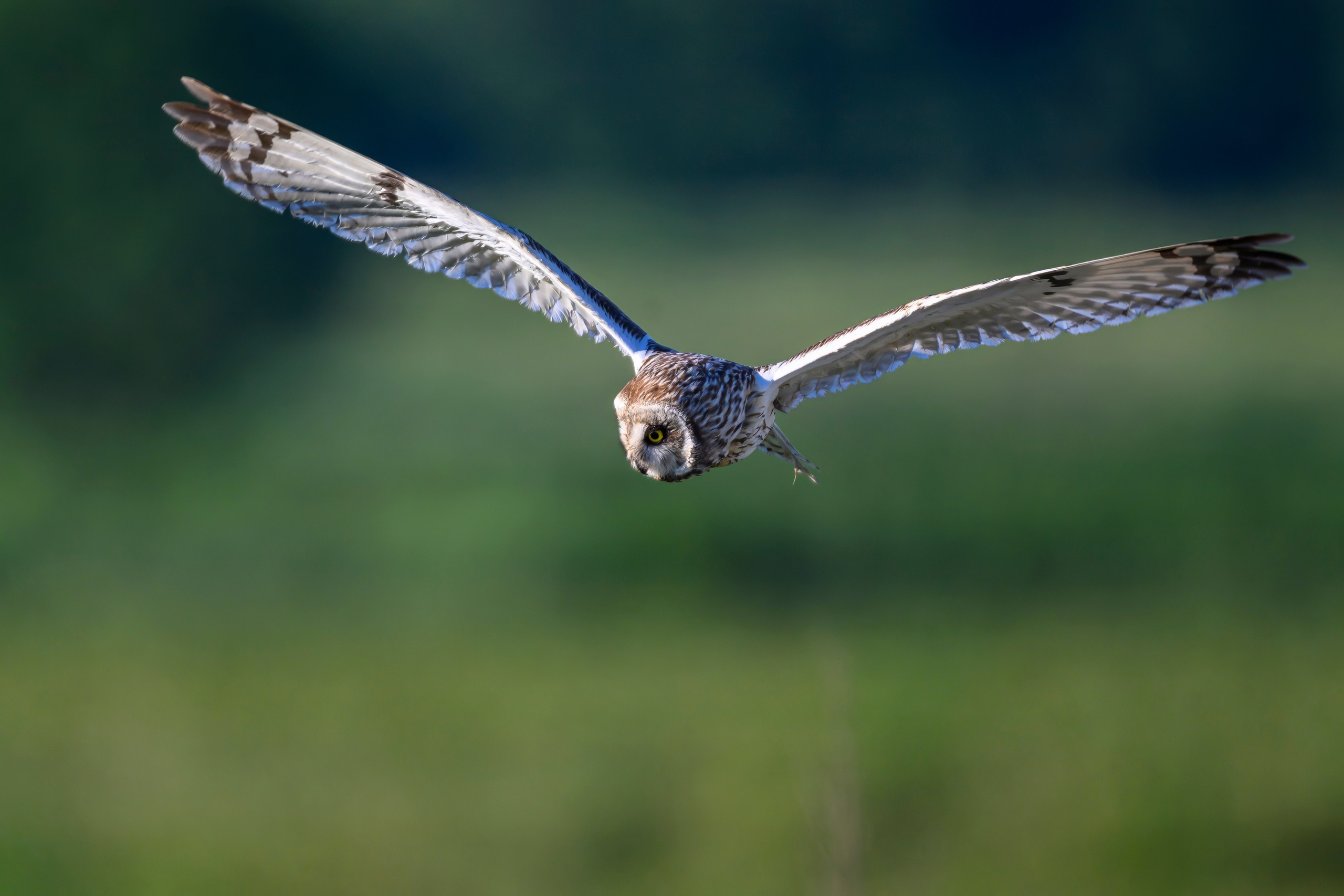
Role of Hearing and Vision in Hunting
Like most owls, the short-eared owl possesses highly developed senses, allowing it to hunt effectively even in poor visibility or low-light conditions. Both vision and hearing play crucial roles in its hunting strategy.
The short-eared owl’s vision is adapted to detect movement at great distances and in twilight or foggy conditions, which are common in its hunting grounds. Its large, bright yellow eyes are capable of picking up the slightest movements of prey, even in low light, making it an efficient hunter both during the day and at dusk.
Hearing is equally critical, especially when it comes to detecting small mammals hidden in tall grass or under snow. Like many other owls, the short-eared owl has asymmetrically placed ears—one ear is positioned higher than the other—enabling it to pinpoint the direction and distance of sound more accurately. This adaptation allows the owl to “see” its prey through sound, even when the prey is hidden from direct view.
The combination of sharp vision and unique hearing gives the short-eared owl a distinct advantage, allowing it to locate its prey precisely in conditions where other predators might lose track.
Thus, the short-eared owl is a highly efficient predator whose hunting tactics and biological features enable it to thrive in diverse environments, from wetlands and meadows to agricultural fields. Its ability to adapt to different types of prey and habitats makes it a vital part of the ecosystem, playing a key role in controlling small mammal populations.

Breeding and Raising Offspring
The reproduction of the short-eared owl is a complex and carefully organized process that involves both selecting a mate and nurturing the offspring. In the wild, these birds exhibit remarkable adaptations, from courtship rituals to caring for their young. Their lifestyle is closely tied to natural cycles, the availability of food, and the safety of nesting areas.
Breeding Season
The short-eared owl’s breeding season typically begins in spring, as temperatures rise and food supplies, particularly the population of rodents, reach their peak. In the Northern Hemisphere, the mating season for the short-eared owl starts in April and can extend through June, depending on climate conditions. This period aligns with the increased activity of small mammals like voles, which plays a crucial role in the success of breeding.
In years when the population of their primary prey significantly increases, the owl population also rises, resulting in more nests and higher reproductive success. Conversely, in unfavorable years with fewer food resources, the number of breeding pairs and the success of raising offspring significantly decreases.
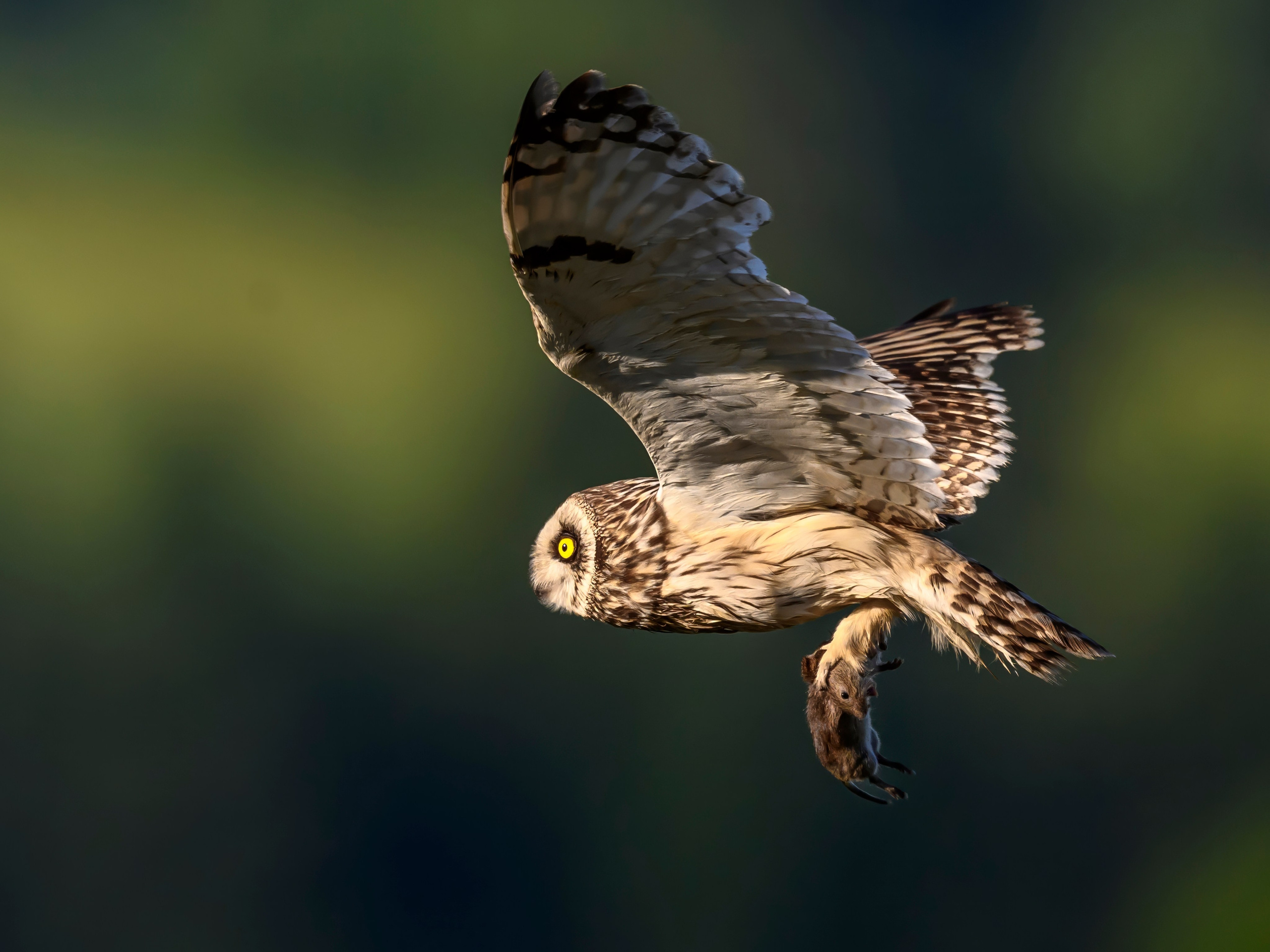
Courtship and Mating Rituals
The courtship rituals of the short-eared owl are quite expressive and involve both auditory and visual elements. Males actively attract the attention of females through complex aerial “dances,” which include rapid ascents and descents, often accompanied by wing claps. These aerial maneuvers are designed to showcase the male’s strength, agility, and hunting prowess.
The auditory component of courtship includes loud hooting from the male, which can be heard from a considerable distance. These calls serve a dual purpose: they attract females and warn other males that the territory is already occupied. Males may also hoot while flying, enhancing the impact of their display.
If the female accepts the male’s courtship, she may join him in flight, and the pair will engage in synchronized flying, demonstrating their compatibility and readiness to form a bond. Successful courtship rituals culminate in the pair choosing a nesting site.
Nesting: Site Selection and Nest Construction
One of the most interesting features of the short-eared owl is that it nests directly on the ground, rather than in trees or cliffs like many other owl species. The nest is usually located in dense, tall grass, in wetlands, or among reeds, which provides the bird with excellent camouflage and protection from predators. Open areas such as fields or steppes are also suitable for nesting, especially if there are enough cover options like shrubs or tall grass.
Females choose the nesting site based on several key factors: safety from predators, proximity to water, and the abundance of food in the area. The nest itself is a simple structure—typically a shallow depression in the ground lined with dry grass, leaves, and down for warmth and comfort. Since the nest is on the ground, it is particularly vulnerable to predators such as foxes, raccoons, and large birds of prey, making the choice of location critically important.
Raising Chicks: Feeding and Protection from Predators
Once a nesting site is selected, the female lays between 4 to 7 eggs, which she incubates for 25-30 days. During this time, the male is responsible for hunting and bringing food to the female. He provides for the family during the early stages when the female cannot leave the nest.
When the chicks hatch, they are covered in soft down and are entirely helpless. For the first few days, the female stays with the chicks, keeping them warm and protecting them from the weather, while the male continues to bring food. The primary diet of the chicks consists of small mammals like voles and mice, which the male regularly delivers to the nest. The chicks grow rapidly and, within a few weeks, begin to leave the nest and hide in the nearby grass, although they remain dependent on their parents for food.
Protecting the offspring is one of the adult owls' key responsibilities. Short-eared owls are aggressive toward any potential threats, whether from predators or other birds. They may attack intruders with sharp aerial maneuvers and loud cries. In addition to active defense, the nest’s camouflage is crucial: tall grass and wetland surroundings make the nest difficult to access and virtually invisible to most predators.
The chicks become independent about 5-6 weeks after hatching. At this point, they start hunting on their own, although they may still rely on their parents for guidance and food for some time. By mid-summer, young owls are typically ready for independent life and migration, if necessary.
Thus, the breeding and raising of offspring in short-eared owls is a carefully organized process in which every element—from partner selection to nest defense—plays a vital role in ensuring the survival of the next generation.
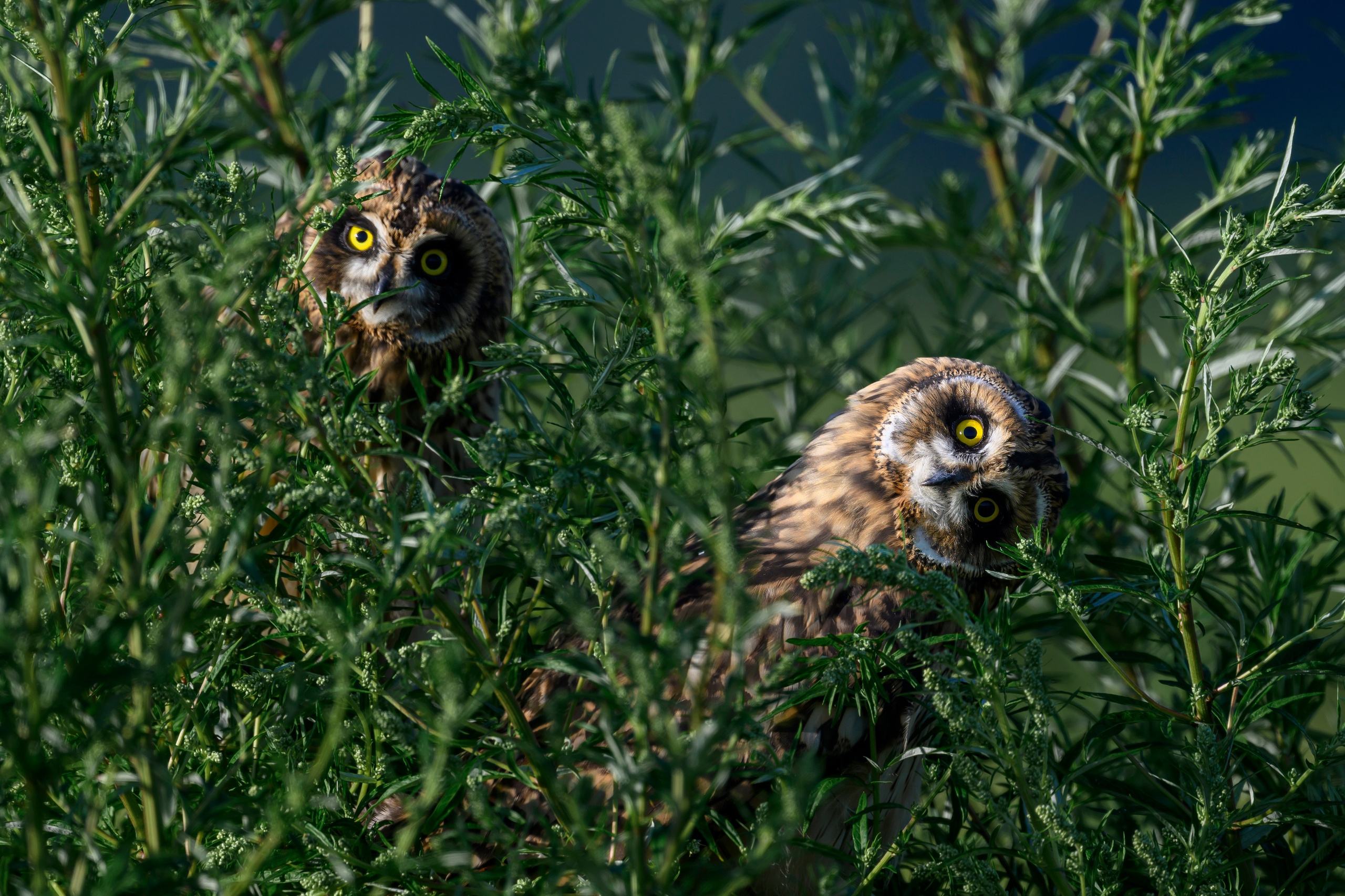
Where and How to Find the Short-Eared Owl
Observing the short-eared owl can be a fascinating activity for birdwatchers and nature enthusiasts. Due to its daytime activity and preference for open spaces, finding this owl is somewhat easier compared to other nocturnal species. However, to successfully locate it, several factors must be considered, such as habitat, time of day, and weather conditions.
Best Places to Observe the Short-Eared Owl
The short-eared owl prefers open and semi-open areas with tall grass or dense shrubs, making such ecosystems ideal for finding this bird. Some of the most typical habitats for the short-eared owl include:
- Wetlands and Peat Bogs: These areas with high humidity and dense vegetation, such as reeds and sedges, provide an ideal environment for nesting and hunting. Wetlands offer the owl an abundance of food in the form of small mammals and insects.
- Fields and Meadows: Open meadows covered in tall grass, as well as agricultural lands where the owl can hunt voles and other rodents, are also favorable habitats. Short-eared owls are often found on abandoned fields with thick vegetation and little human activity.
- Abandoned Areas: Abandoned agricultural or industrial sites with patches of wild nature can also attract short-eared owls. These areas have minimal human interference, creating a comfortable environment for nesting and hunting.
- Coastal Zones and River Deltas: Near bodies of water and rivers, especially in places with rich vegetation, short-eared owls find suitable conditions for hunting and nesting.
- Steppes and Grasslands: In steppe regions with a large population of field rodents, owls find an abundance of food. These areas can be particularly favorable for observing owls during migration periods.
By focusing on these types of habitats, especially during peak hunting hours, birdwatchers can significantly increase their chances of encountering and observing short-eared owls in the wild.

Best Time of Day for Observing
The short-eared owl is a diurnal bird, making it easier to spot compared to other owls that are primarily active at night. However, to maximize your chances of observing this bird, it’s important to choose the optimal times of day.
- Morning: One of the best times to observe the short-eared owl is early morning. During this period, owls often hunt in open spaces when it’s still quiet and cool. They are most active in the morning, making their behavior more predictable and easier to observe.
- Evening: Evening hours, just before sunset, also provide a good opportunity for observations. Short-eared owls become more active as dusk approaches and begin their hunt before nightfall. At this time, they are often seen gliding over fields or wetlands in search of food.
While it’s possible to spot the short-eared owl during the middle of the day, the chances of seeing one are significantly higher in the early morning and evening, when they are actively hunting or moving through their territory in search of prey.
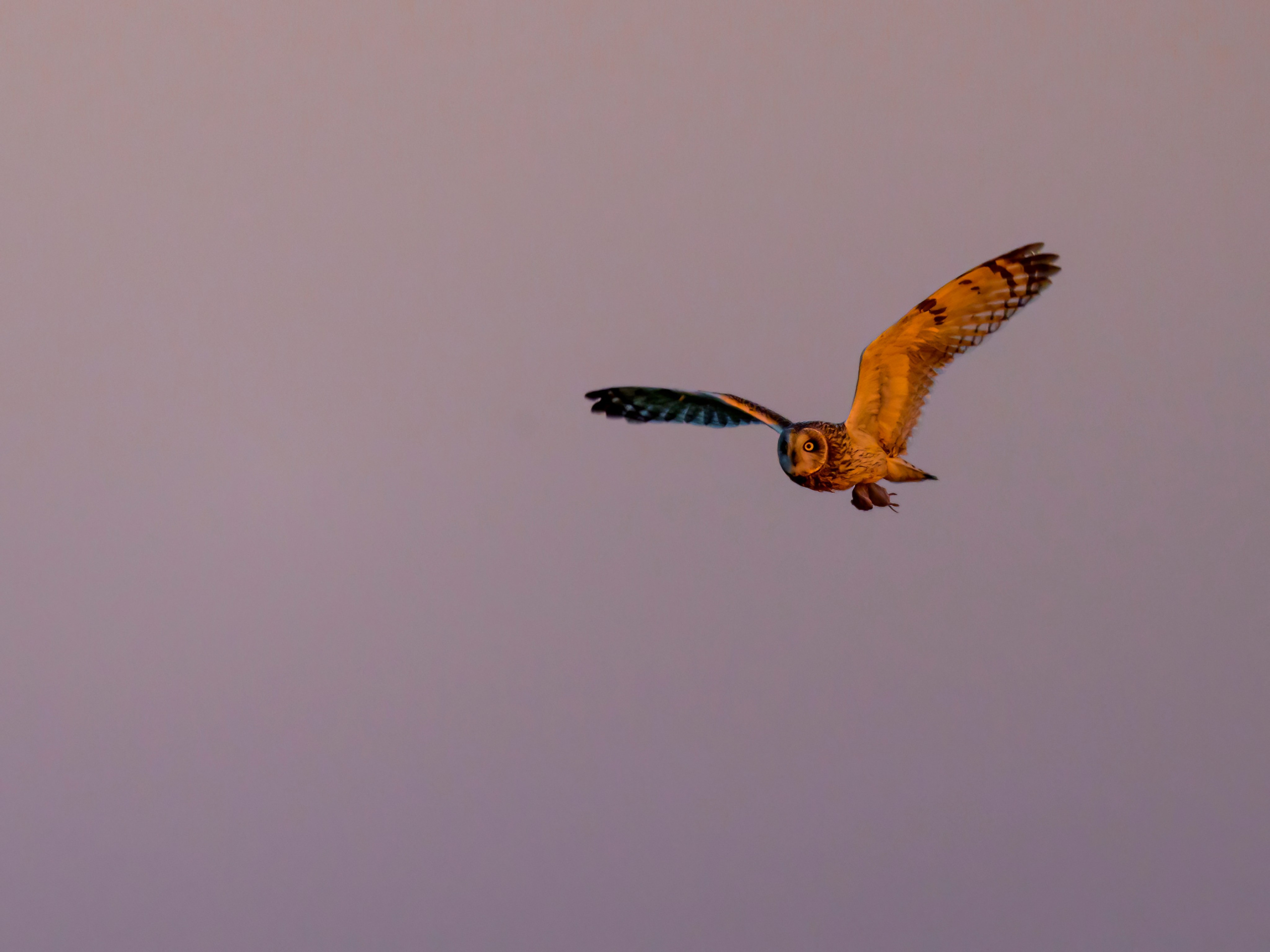
Weather Conditions
Weather conditions can significantly affect the likelihood of successfully observing the short-eared owl. Since birds adjust their behavior based on the weather, it’s important to choose the right time for your nature excursion.
- Clear Days: The best weather conditions for observing are clear or slightly cloudy days. On such days, short-eared owls frequently soar over open fields and wetlands, scanning the area for prey. In sunny weather, the owls tend to be less cautious and easier to spot.
- Foggy Periods: Surprisingly, foggy conditions can also be a good time to observe short-eared owls. Thanks to their sharp vision and hearing, they navigate well in limited visibility, continuing to hunt even in dense fog. During these moments, they are less noticeable to other predators, and their flight through the mist can be particularly mystical and beautiful.
- Calm Weather: Windless days or those with light breezes are ideal for observation, as short-eared owls rely on their smooth, silent flight. Windy weather can hinder their hunting and movement, making them less active.
Therefore, to successfully find a short-eared owl, it’s important to select open or semi-open natural areas with dense vegetation, visit them during the morning or evening hours, and monitor the weather forecast. Following these conditions will greatly increase your chances of encountering this remarkable bird in the wild.
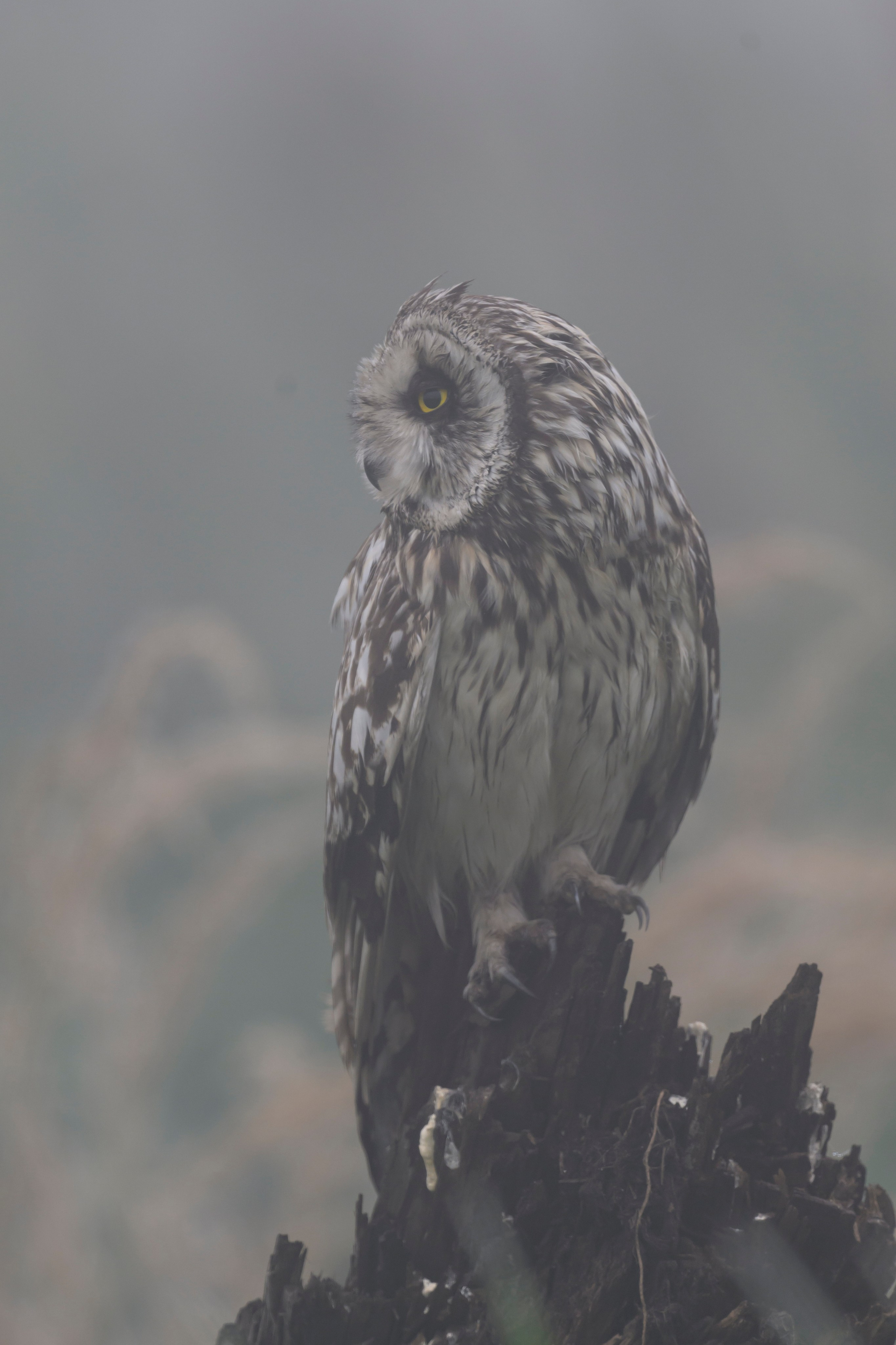
Photographing the Short-Eared Owl
Photographing the short-eared owl can be an exciting and memorable experience for nature lovers and professional photographers alike. However, to capture high-quality images of this elusive bird without disturbing its natural rhythm, several aspects need to be considered, from preparing the right equipment to adhering to ethical guidelines.
Preparation: Equipment and Camera Settings
To successfully photograph the short-eared owl, proper preparation is key, requiring both the right equipment and camera settings, as photographing this bird often demands precision and flexibility.
- Telephoto Lenses: Since short-eared owls are often spotted from a distance, standard lenses may not capture detailed shots. It’s recommended to use telephoto lenses with a focal length of 300 mm or more. These lenses allow for sharp images from a significant distance, preventing the need to get too close and risk scaring the bird. If possible, a zoom lens (e.g., 100-400 mm) offers versatility, enabling you to adjust the framing as needed depending on the situation.
- Camera Settings: To achieve sharp images of the short-eared owl, proper camera settings are crucial. A fast shutter speed (1/1000 of a second or faster) is important, especially if you’re photographing the owl in flight. This will freeze the motion and deliver crisp shots. For shooting in low-light conditions (such as during twilight or fog), increasing the ISO may be necessary, but care should be taken to minimize noise in the images. Burst shooting mode is also useful, as owls can move quickly, and this will help capture the best moment.
- Tripod and Monopod: To stabilize the camera, especially when using long focal lengths or shooting in low light, a tripod or monopod can be helpful. These tools provide stability and ensure maximum sharpness, which is crucial for long-distance or low-light photography.
By combining the right equipment and settings, you’ll have a much higher chance of capturing striking, detailed photographs of the short-eared owl in its natural environment.
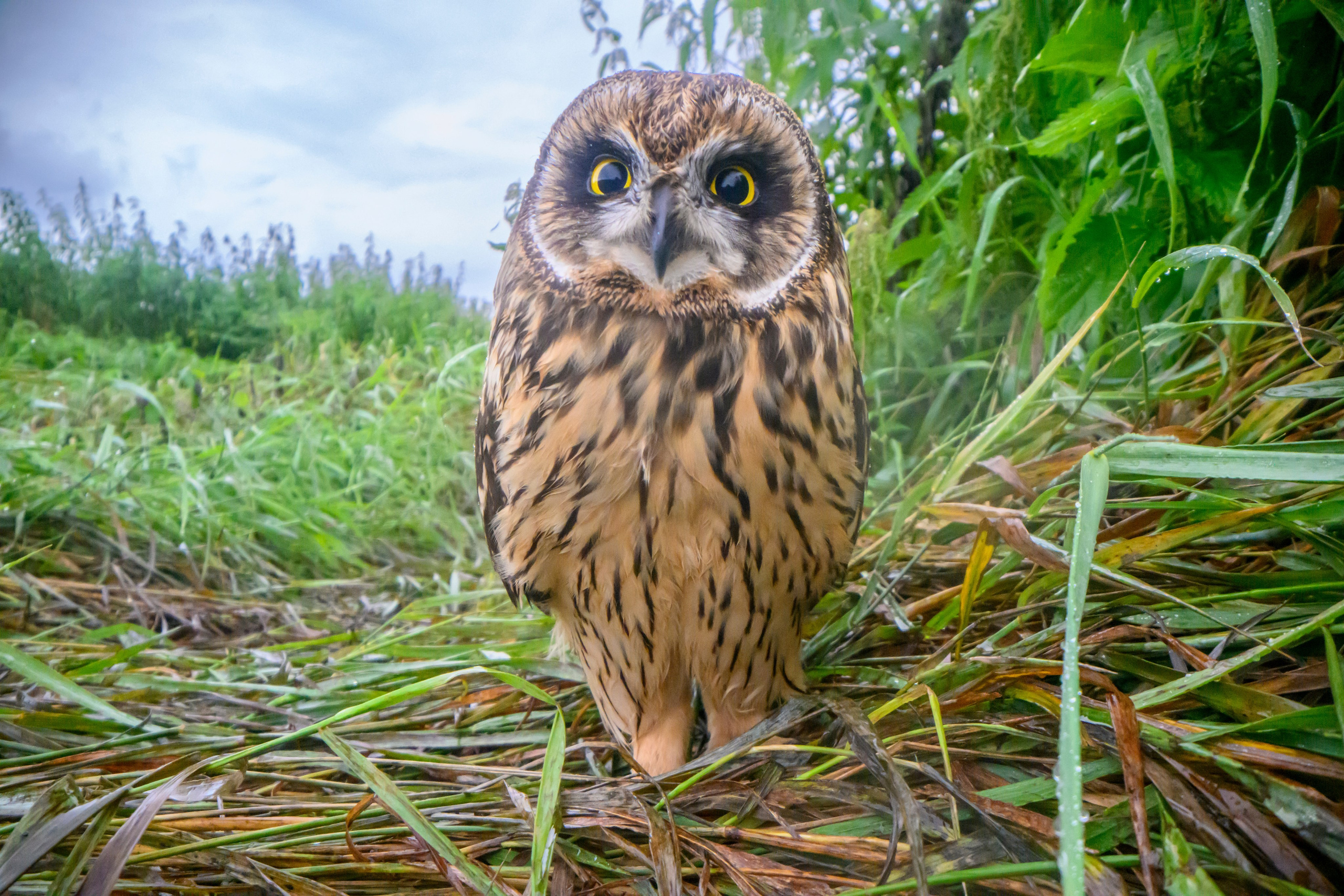
Basic Rules for Photographing Birds in the Wild
When photographing wild birds, especially those like short-eared owls, it’s essential to follow certain rules that help avoid disturbing the bird and allow it to maintain its natural behavior.
- Quiet and Cautious Behavior: Although short-eared owls are less skittish than some other bird species, they can still be easily startled by human presence. It’s important to move quietly and avoid sudden movements. Gradual and careful approaches, using natural cover like bushes or reeds, can minimize the chances of scaring the bird away.
- Neutral-Colored Clothing: When photographing in the wild, it’s best to wear muted or camouflage-colored clothing to avoid attracting the bird’s attention with bright or contrasting colors. This helps you remain inconspicuous in the natural environment.
- Use of Blinds and Hides: If possible, it’s ideal to use blinds or camouflage tents. This allows you to observe the bird for longer periods without disturbing it, leading to more natural and candid photographs.
By adhering to these practices, you can capture the owl’s natural behavior without causing unnecessary stress to the bird, ensuring a more authentic and responsible wildlife photography experience.
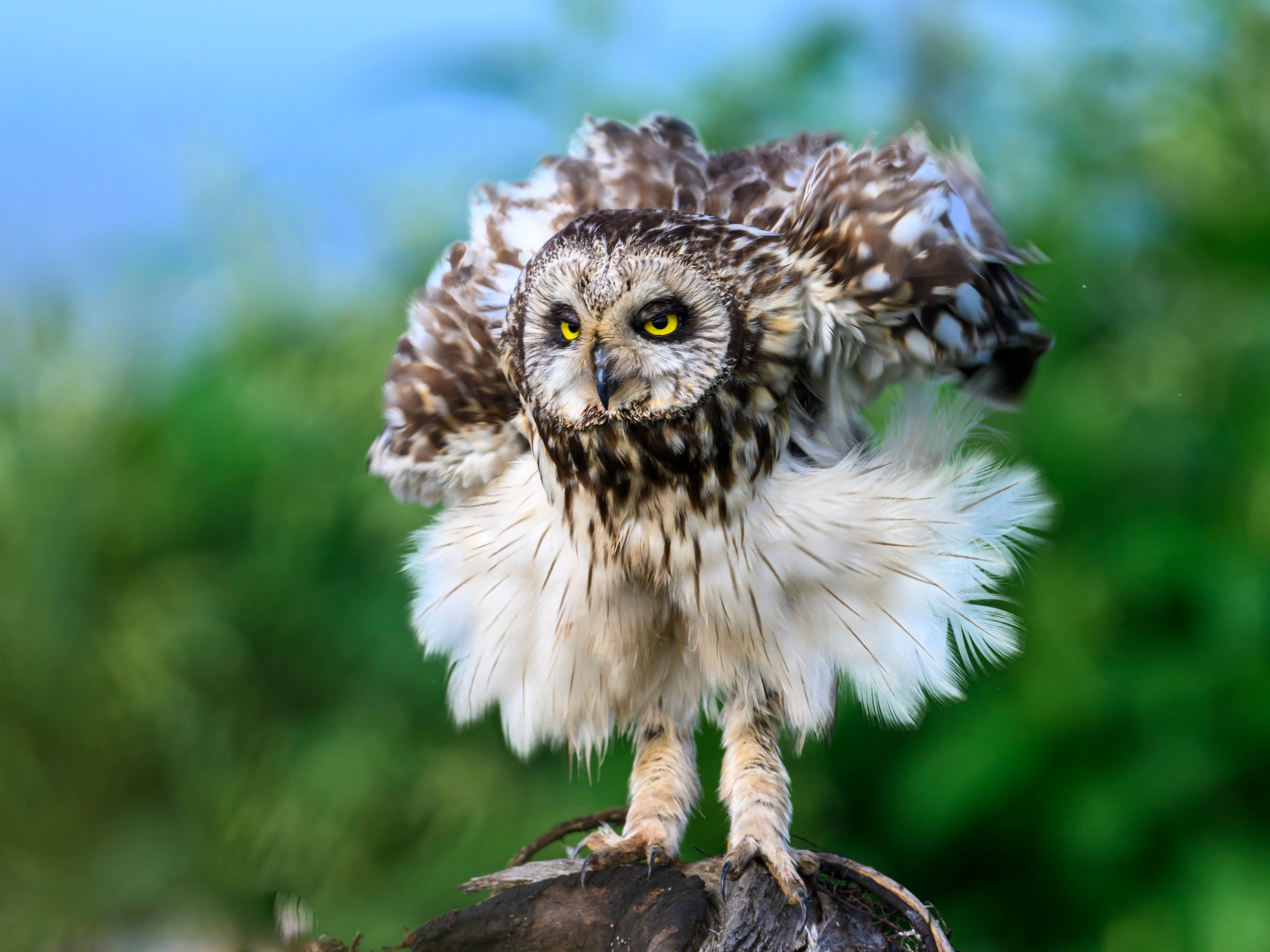
Choosing the Right Moment: Shooting in Flight, During Hunting, or at Rest
To capture impressive images of the short-eared owl, it’s important to choose the right moments that showcase the bird’s unique behavior and movement.
- Shooting in Flight: The short-eared owl is a magnificent flyer, with its wide wingspan and silent flight making it especially attractive for photography. To get good flight shots, it’s crucial to position yourself in an open area with a clear view (such as a wetland or meadow) where the owl is likely to hunt. The key is to capture the moment when the owl glides smoothly over the ground or when it makes a sudden dive toward its prey.
- Shooting During Hunting: One of the most exciting moments to photograph a short-eared owl is during the hunt. Images of the owl suddenly attacking its prey or hovering in the air before striking can become real masterpieces. For such shots, patience is key—observe the bird’s behavior closely and use fast camera settings to freeze the action.
- Shooting at Rest: Don’t miss the opportunity to photograph the short-eared owl during its resting moments. These images can reveal the owl’s characteristic pose, plumage, and expressive eyes. When the owl is resting on the ground or a low bush, approach carefully and try to capture it from different angles for a variety of shots.
By selecting the right moment for each type of behavior, you can create a diverse portfolio of this fascinating bird, capturing its elegance both in action and at rest.
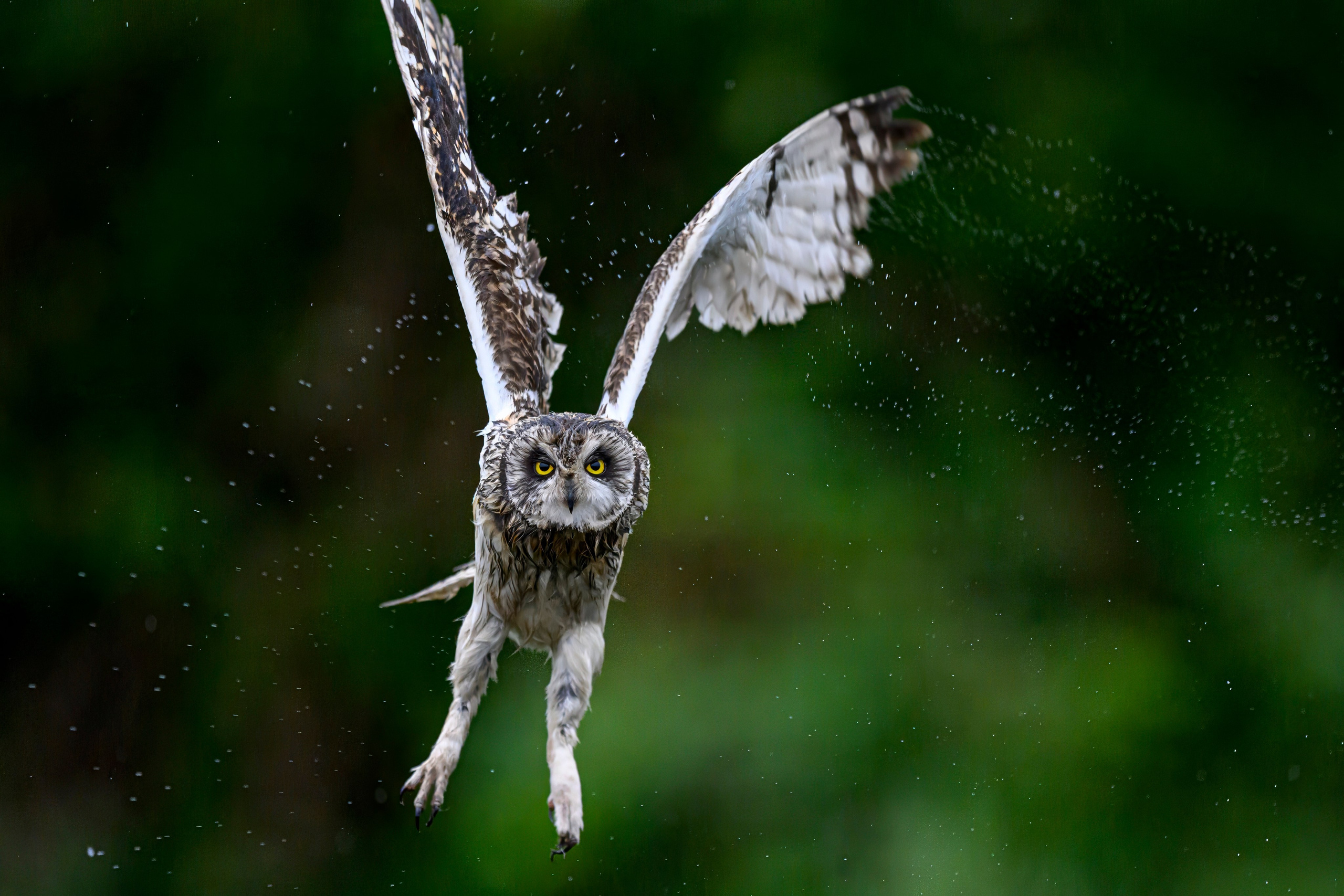
Ethical Considerations: Minimizing Disturbance and Maintaining Distance
One of the key aspects of wildlife photography, especially when photographing birds like the short-eared owl, is adhering to ethical guidelines. A photographer must remember they are a guest in the natural world and should minimize their impact on the environment.
- Minimizing Disturbance: It is crucial not to disrupt the owl’s behavior or get too close to invade its personal space. A short-eared owl may become frightened and leave the area, which could affect its ability to hunt or care for its offspring. Using telephoto lenses allows you to capture images from a safe distance, avoiding stressful situations for the bird.
- Maintaining Distance: It is best to stay at least 30-50 meters away from the owl to avoid interrupting its natural behavior. If the owl becomes aware of your presence and starts showing signs of anxiety (e.g., raising its head or turning towards you), it’s a sign you’re too close and should retreat.
- Avoiding Nesting Areas: During the breeding season, it is especially important to avoid disturbing birds at their nesting sites. Photographing nests or chicks can cause the parents to abandon their young or attract predators.
By following these guidelines, you can not only capture impressive and unique images of the short-eared owl but also maintain a balance between your passion for photography and respect for nature.
ВThe Importance of Protecting the Short-Eared Owl and Its Habitat
The short-eared owl is not only a magnificent hunter and an important participant in the ecosystem, but also a symbol of open spaces that are increasingly disappearing due to urbanization and agricultural expansion. It is essential to remember that the preservation of this remarkable species is directly tied to the health of its habitat. Wetlands, meadows, and steppes, where the short-eared owl lives and hunts, are gradually shrinking due to drainage, land-use changes, and human impact on nature. This makes the protection of the owl and its habitat a top priority for maintaining biodiversity.
Conserving the short-eared owl requires a comprehensive approach that includes the preservation of natural habitats vital to its survival. The loss of wetlands and grasslands not only reduces the owl’s range but also diminishes the population of its primary prey—voles and other small mammals. It is crucial to support these ecosystems through nature conservation programs, wetland restoration, and preventing uncontrolled agricultural expansion.
Moreover, the protection of the short-eared owl helps maintain balance in the ecosystem, where it plays a critical role in regulating rodent populations. Therefore, efforts to conserve this species have a broad positive effect on the preservation of other plant and animal species inhabiting the same ecosystems.
Responsible Behavior in Birdwatching and Photography
Observing the short-eared owl is not only a joy for nature lovers but also a responsibility. It is important to remember that when photographing or observing this bird, one must minimize the impact on its behavior and avoid disturbing its natural habitat. Observations and photography should be done from a safe distance to avoid alarming the bird, particularly during breeding and nesting seasons.
Every wildlife photographer or observer must recognize that their actions can have long-term consequences for the population of this species. Using telephoto lenses, maintaining a respectful distance, and refraining from photographing nests or chicks are just some of the ethical guidelines to follow.
The short-eared owl is a unique representative of the wild that offers us a glimpse into its behavior, hunting, and life in open ecosystems. Observing this bird can be a source of inspiration and an opportunity to better understand the delicate mechanisms of natural systems.
Conclusion
Studying nature, protecting it, and interacting responsibly with it are our collective duties. The more we learn about species like the short-eared owl, the better we understand how fragile and valuable the world around us truly is. Supporting wildlife conservation programs and practicing responsible birdwatching are steps that can help preserve this species for future generations.
I encourage everyone interested in observing and photographing the short-eared owl to not only appreciate its beauty but also to become its advocate. Each photograph is not just a beautiful moment captured in nature but also a reminder of the importance of preserving it for generations to come.

В 2025 году фотопроект «Болотная сова» стал лауреатом II Национальной премии «Рассвет» в номинации «Лучший фотопроект». rassvetaward.ru/winners25
Для меня эта награда — не только профессиональное признание, но и прекрасная возможность привлечь ещё больше внимания к охране болотных сов и их среды обитания. Особую благодарность хочу выразить организаторам премии «Рассвет» — Союзу фотографов дикой природы. Спасибо за ваш вклад в развитие экопросвещения и за возможность рассказать о красоте дикой природы широкой аудитории.
Надеюсь, мой проект и дальше будет вдохновлять других фотографов, натуралистов и всех, кто любит природу, на новые исследования и бережное отношение к нашим пернатым соседям!
If you have any questions or suggestions, please contact me via this feedback form:
Photo projects
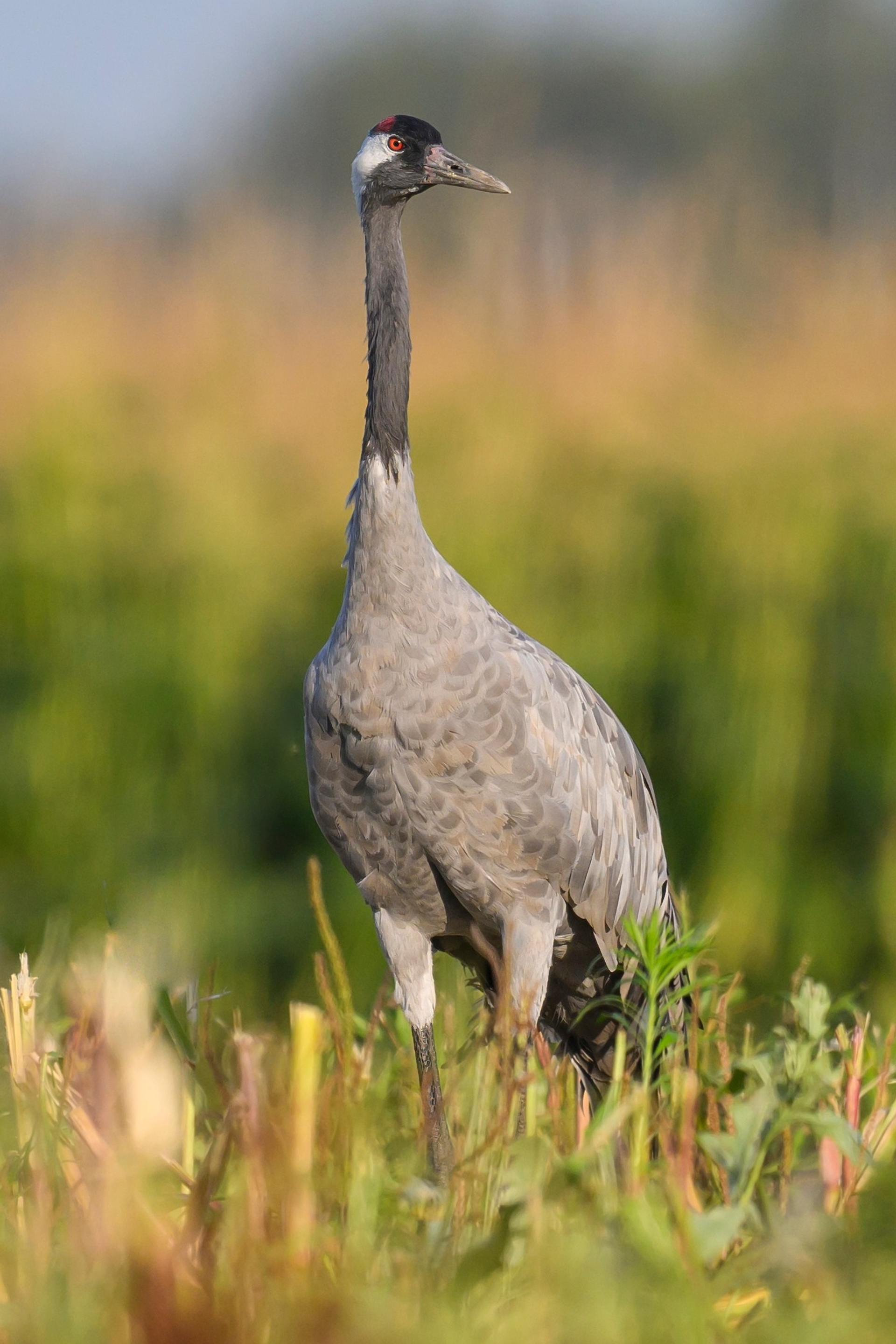
Storks
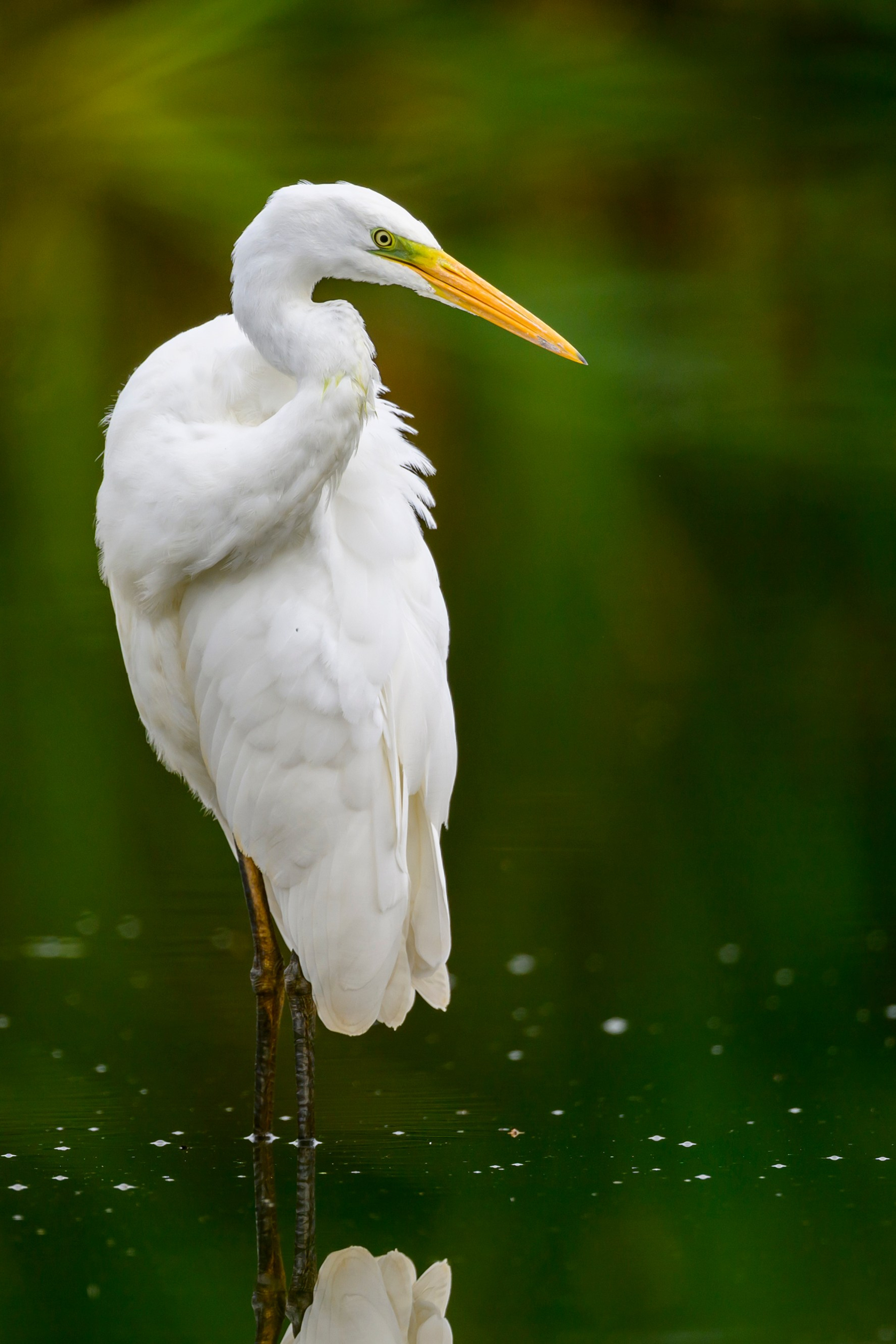
Цапли
